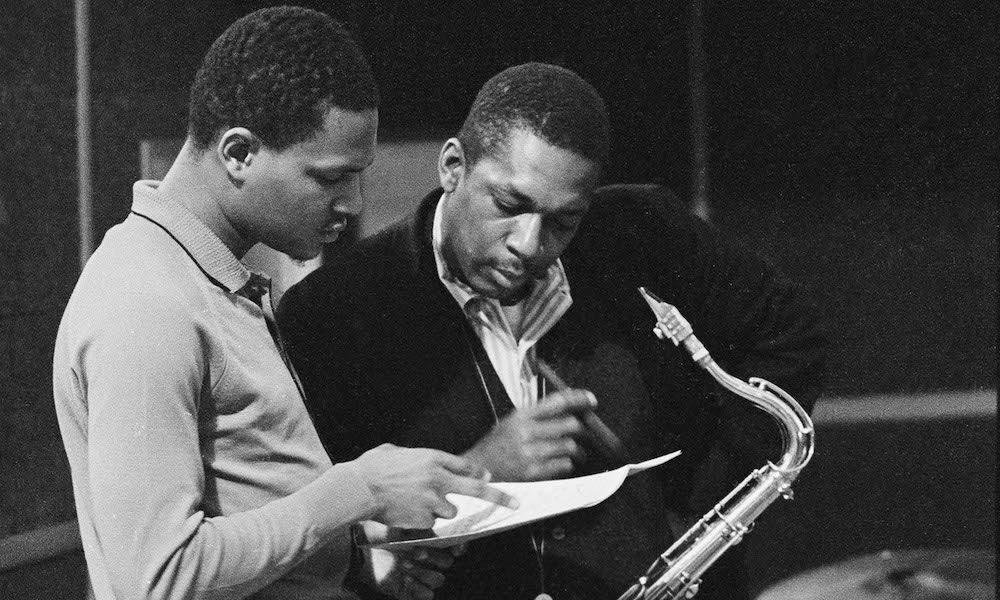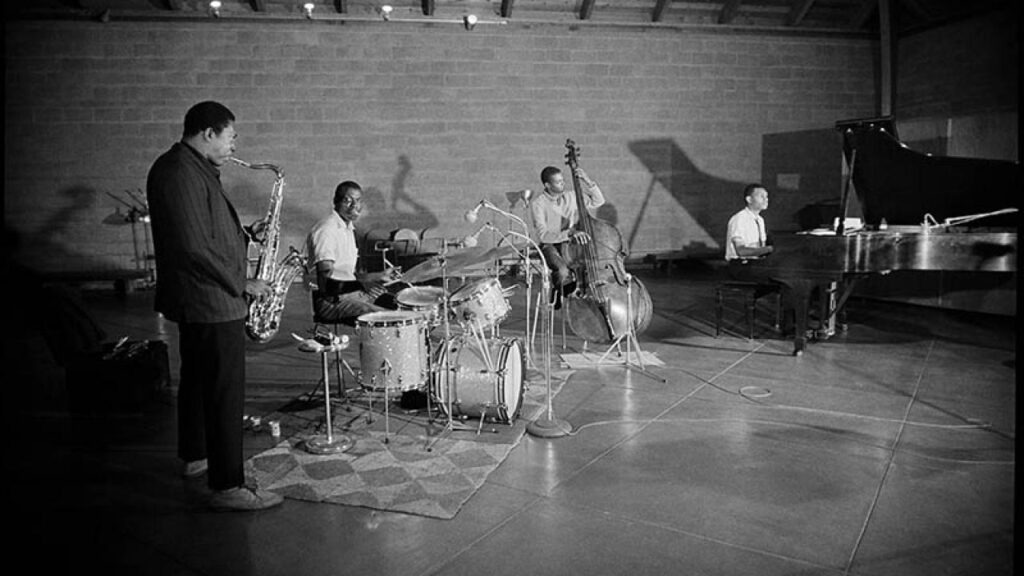Dive into the Power & Passion of ‘Tenor Madness
In the vast panorama of jazz, Sonny Rollins’ “Tenor…
Few albums can boast the impact and enduring legacy of John Coltrane‘s “A Love Supreme.” A masterpiece in both jazz and spiritual music, this album takes listeners on a journey through Coltrane’s quest for divine connection and self-discovery. Comprised of four captivating tracks, “A Love Supreme” remains a groundbreaking and awe-inspiring work more than half a century after its release.

Recorded in December 1964 under the Impulse! label, “A Love Supreme” came to life in the renowned Van Gelder Studio in Englewood Cliffs, New Jersey. Rudy Van Gelder’s expertise as a recording engineer played a crucial role in capturing the album’s magic. The classic John Coltrane Quartet, featuring pianist McCoy Tyner, bassist Jimmy Garrison, and drummer Elvin Jones, delivered an unforgettable performance, leaving a lasting mark on jazz history.

John Coltrane, the visionary leader of the quartet, was already an established figure in the jazz world before recording “A Love Supreme.” His work with the Miles Davis Quintet and the Thelonious Monk Quartet helped shape his unique voice on the saxophone. By the time he formed his own quartet, Coltrane had developed a signature style that would become a cornerstone of modern jazz.

McCoy Tyner, the quartet’s pianist, was another essential component in the creation of “A Love Supreme.” With a background in both bebop and R&B, Tyner’s innovative chord voicings and rhythmic drive provided a rich foundation for Coltrane’s explorations. Prior to joining the quartet, Tyner had worked with jazz luminaries like Benny Golson and Art Farmer, honing his skills as a composer and bandleader.
Bassist Jimmy Garrison and drummer Elvin Jones formed a formidable rhythm section, offering both unwavering support and creative inspiration for the quartet. Garrison’s deep, resonant bass lines anchored the music, while his lyrical solos added another layer of emotional depth. Before joining Coltrane, Garrison had played with prominent artists such as Ornette Coleman and Curtis Fuller. Jones, a true powerhouse on the drums, brought unparalleled energy and intensity to the quartet. His previous work with legends like J.J. Johnson, Bud Powell, and Sonny Rollins prepared him for the innovative and demanding role he would play in Coltrane’s music.
The opening track, “Acknowledgment,” sets the stage for the album with its hypnotic bass ostinato and impassioned saxophone melody. Coltrane’s iconic solo, featuring his signature “sheets of sound” technique, demonstrates his mastery of the instrument. Tyner, Garrison, and Jones each contribute memorable moments that elevate the music to new heights.
“Resolution” showcases the quartet’s ability to navigate complex harmonic structures while maintaining a strong emotional core. Tyner’s piano solo is a study in contrast, blending fiery runs with delicate lyricism. Coltrane’s soaring saxophone lines seem to reach for the heavens, while Garrison and Jones lock in to propel the music forward.
“Pursuance,” my personal favorite, begins with an explosive drum solo by Elvin Jones that immediately grabs the listener’s attention. The relentless energy of this track is infectious, as each musician pushes the boundaries of their instruments. Coltrane’s saxophone dances above the storm, delivering a message of determination and resilience.
“Psalm” concludes the album with a sense of tranquility and introspection. Coltrane’s saxophone seems to speak directly to the soul, while Tyner’s delicate piano work and Garrison’s resonant bass offer a comforting embrace. Jones’ sensitive brushwork provides the perfect backdrop for this reflective piece, allowing the listener to absorb the full emotional impact of the album’s journey.
The second day of recording featured an expanded lineup, including saxophonist Archie Shepp and bassist Art Davis. Although Coltrane experimented with a sextet version of “Acknowledgment,” none of the takes from that session made it onto the final album. This decision suggests that Coltrane was more satisfied with the quartet’s performance on the first day, possibly even considering a hybrid release with the sextet on “Acknowledgment” and the quartet for the remainder of the suite.
“A Love Supreme” is characterized by its innovative musical style and spiritual themes. The album’s structure, with each track representing a different stage in Coltrane’s spiritual journey, offers listeners a glimpse into his deep connection with the divine. The music itself pushes the boundaries of jazz, incorporating elements of modal harmony, free improvisation, and intricate rhythmic patterns that challenge and engage the listener.

Upon its release, “A Love Supreme” was met with critical acclaim and commercial success. The album’s unique blend of spiritual exploration and musical innovation resonated with audiences around the world. Its impact on the jazz community was profound, inspiring countless musicians to pursue their own creative and spiritual paths.
Today, “A Love Supreme” is considered one of the greatest achievements in jazz history. Its timeless message of spiritual connection and self-discovery continues to resonate with listeners, as its musical innovations continue to inspire new generations of artists. The album’s significance has only grown over the years, solidifying its place as a true masterpiece.
Many musicians have cited “A Love Supreme” as a major influence on their own work, with artists like Carlos Santana, John McLaughlin, and Branford Marsalis incorporating elements of Coltrane’s masterpiece into their music. The album’s impact extends beyond the jazz world, as its themes of spirituality and self-discovery resonate with listeners across genres and generations.
In conclusion, John Coltrane’s “A Love Supreme” stands as a testament to the power of music to express our deepest emotions, beliefs, and aspirations. The album’s enduring legacy is a tribute to the visionary musicians who brought it to life, as well as to the timeless themes it explores. As the world continues to grapple with division and unrest, the message of unity and love expressed in “A Love Supreme” remains as relevant and inspiring as ever.